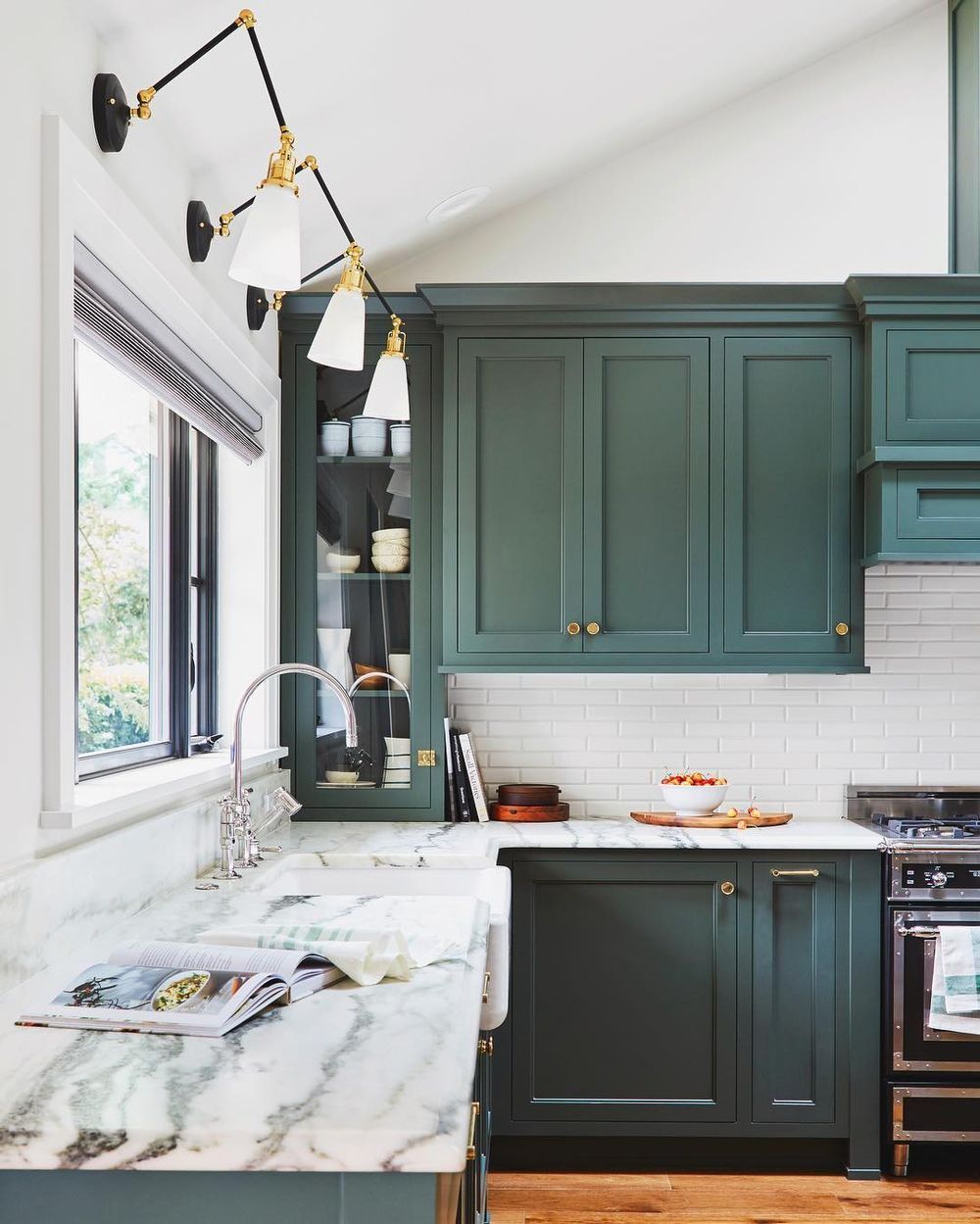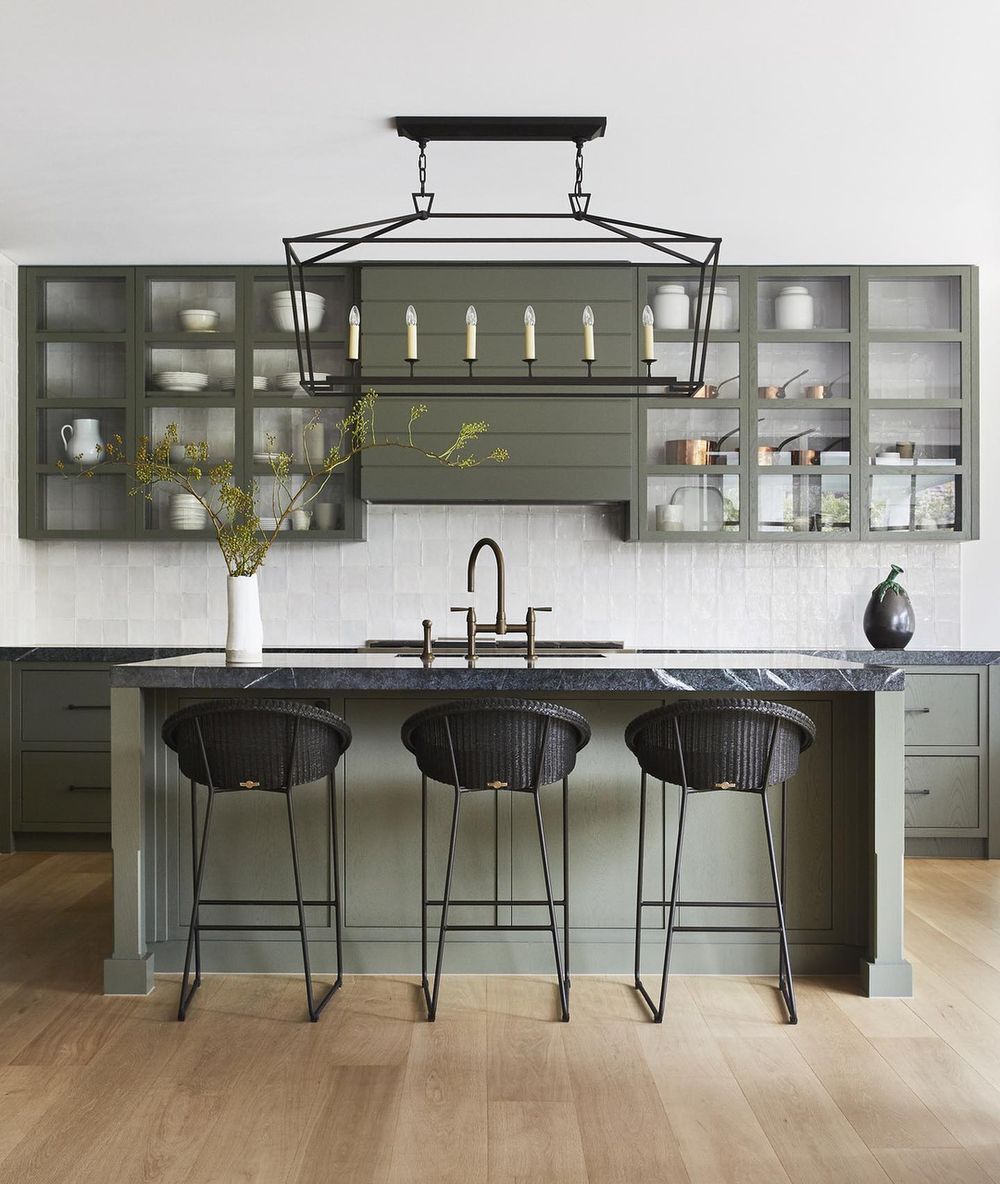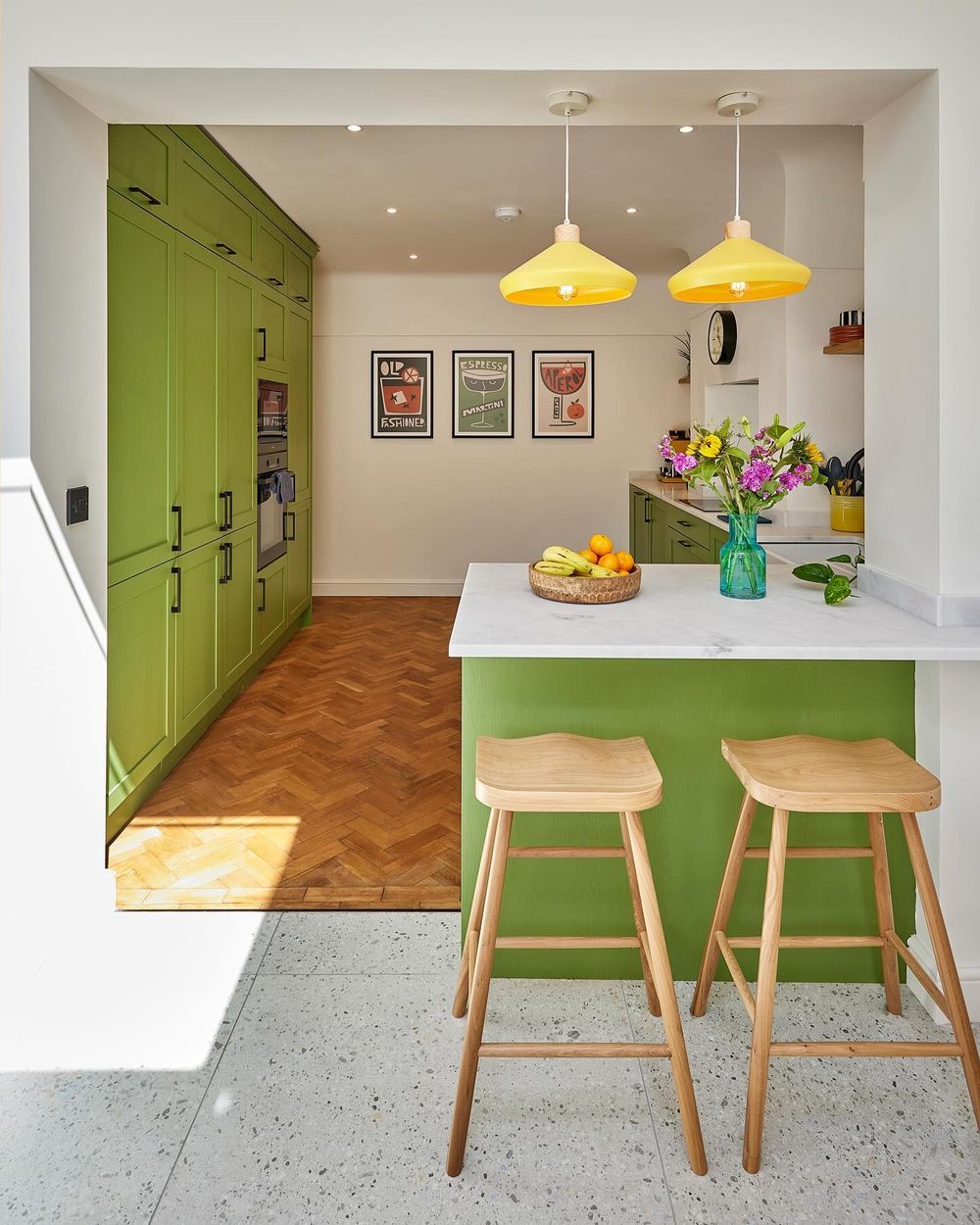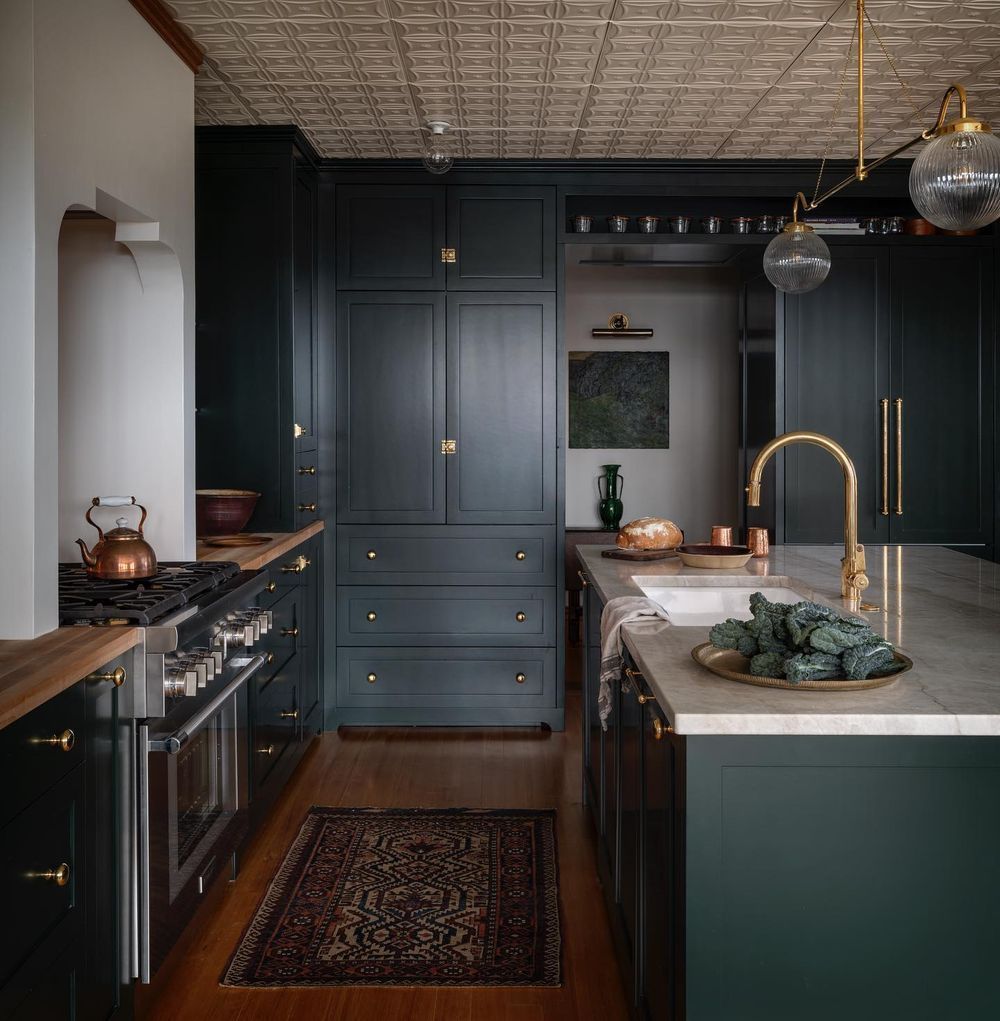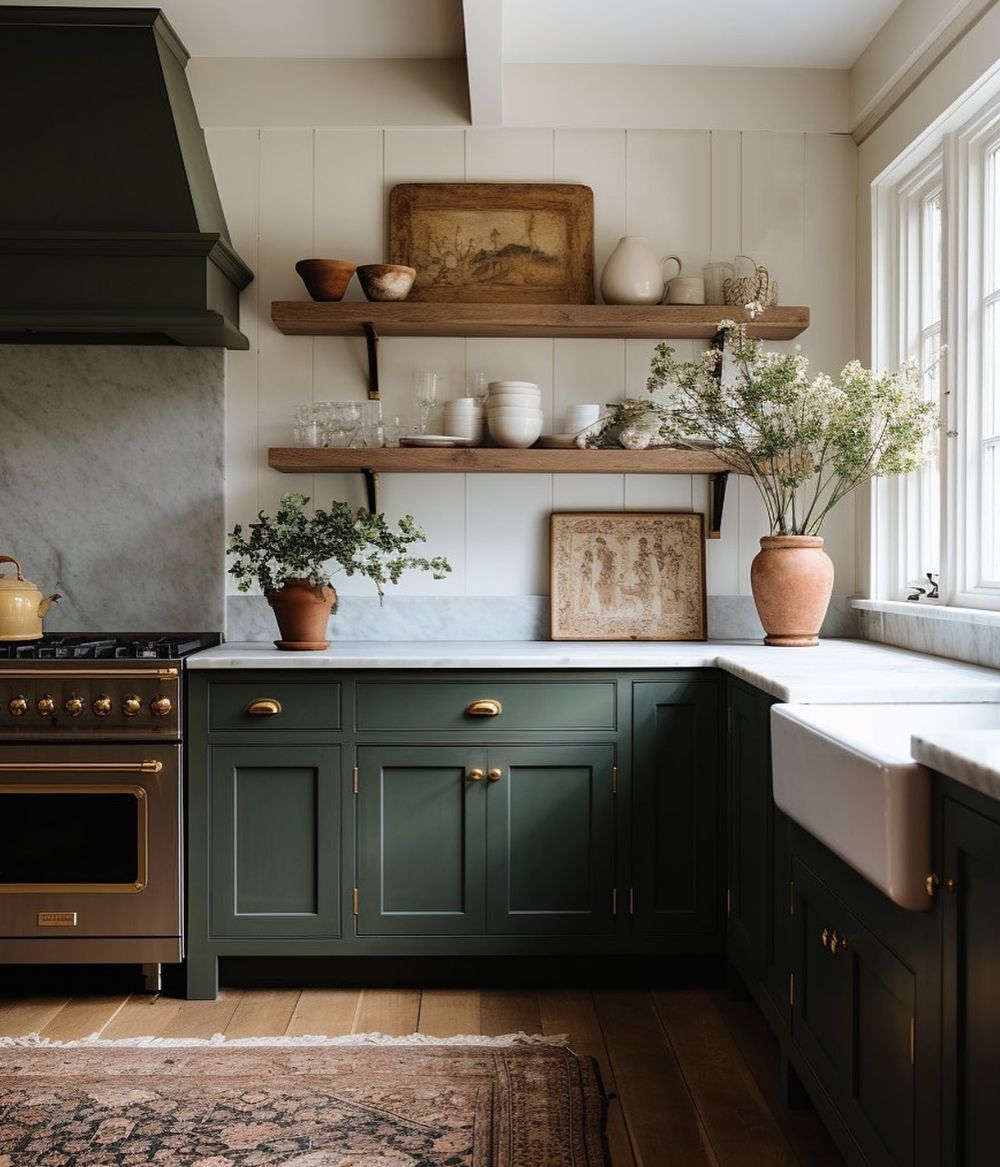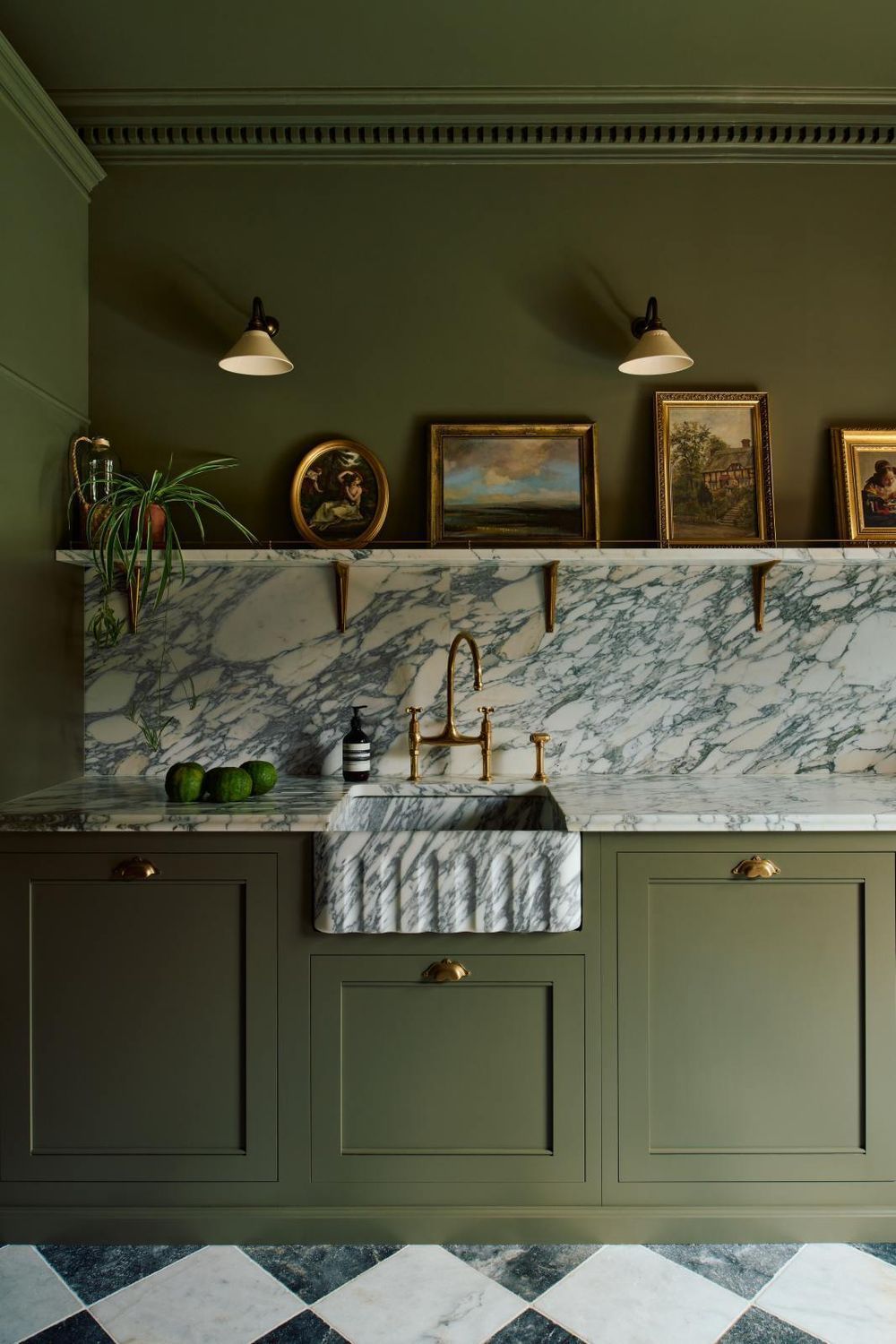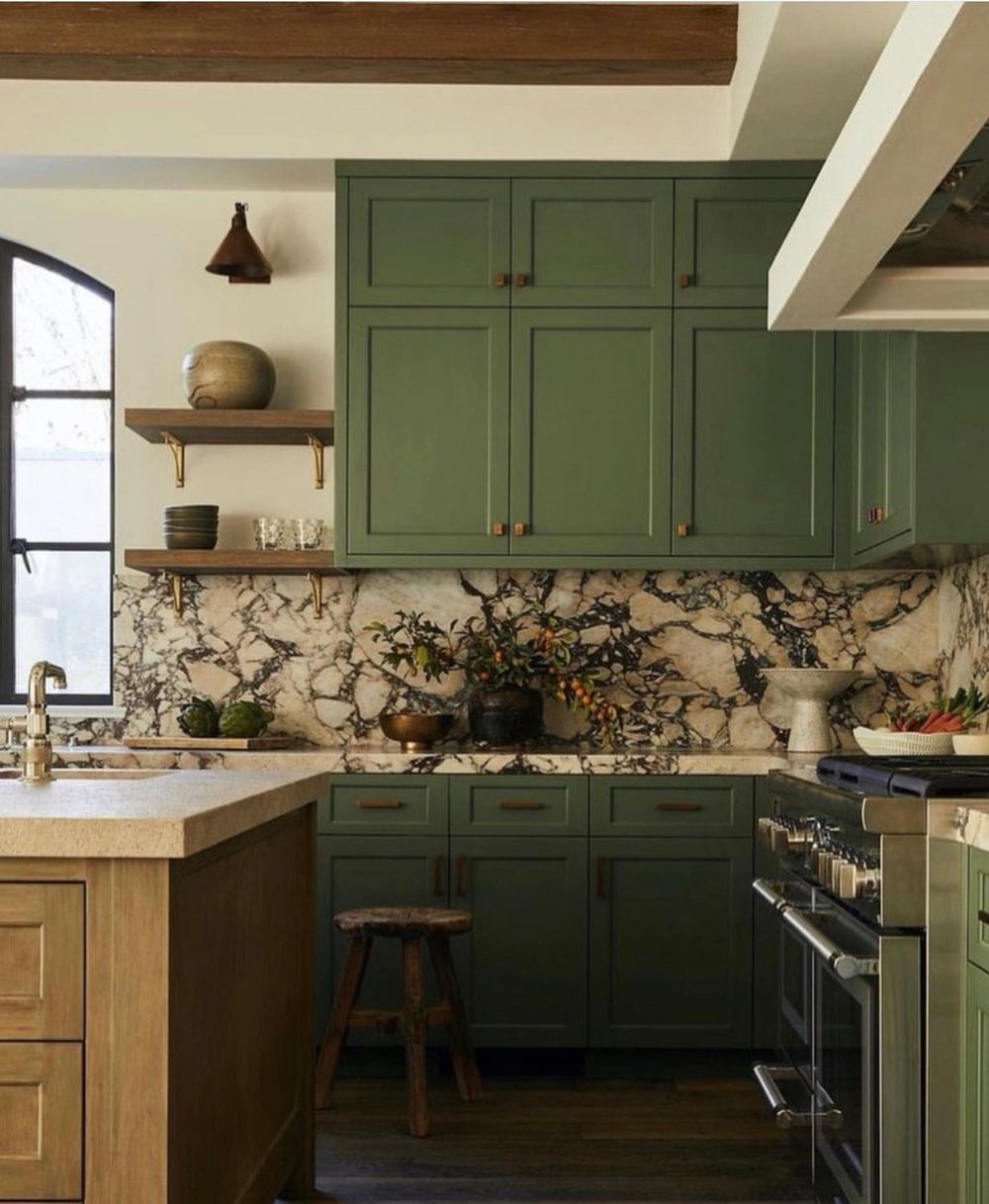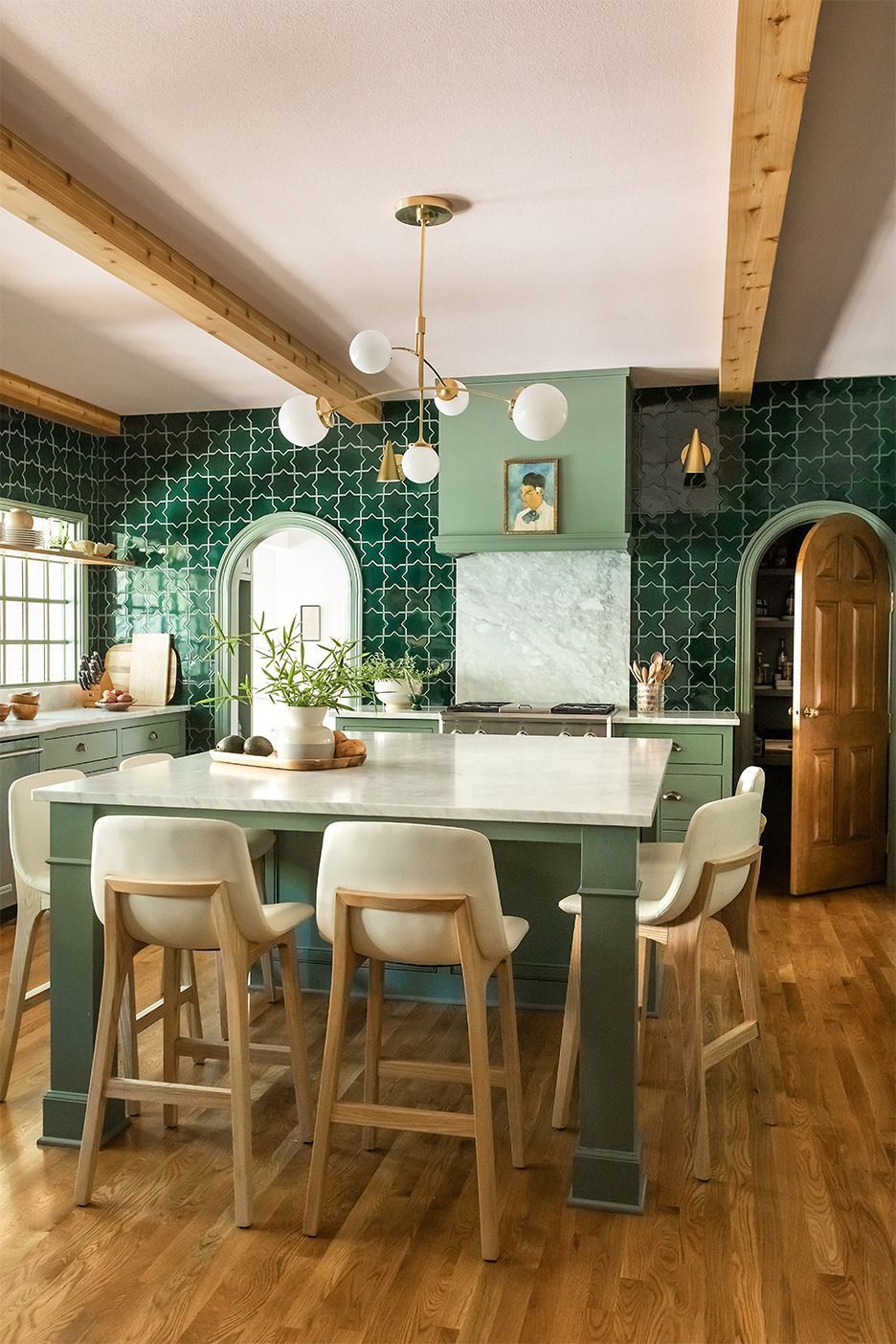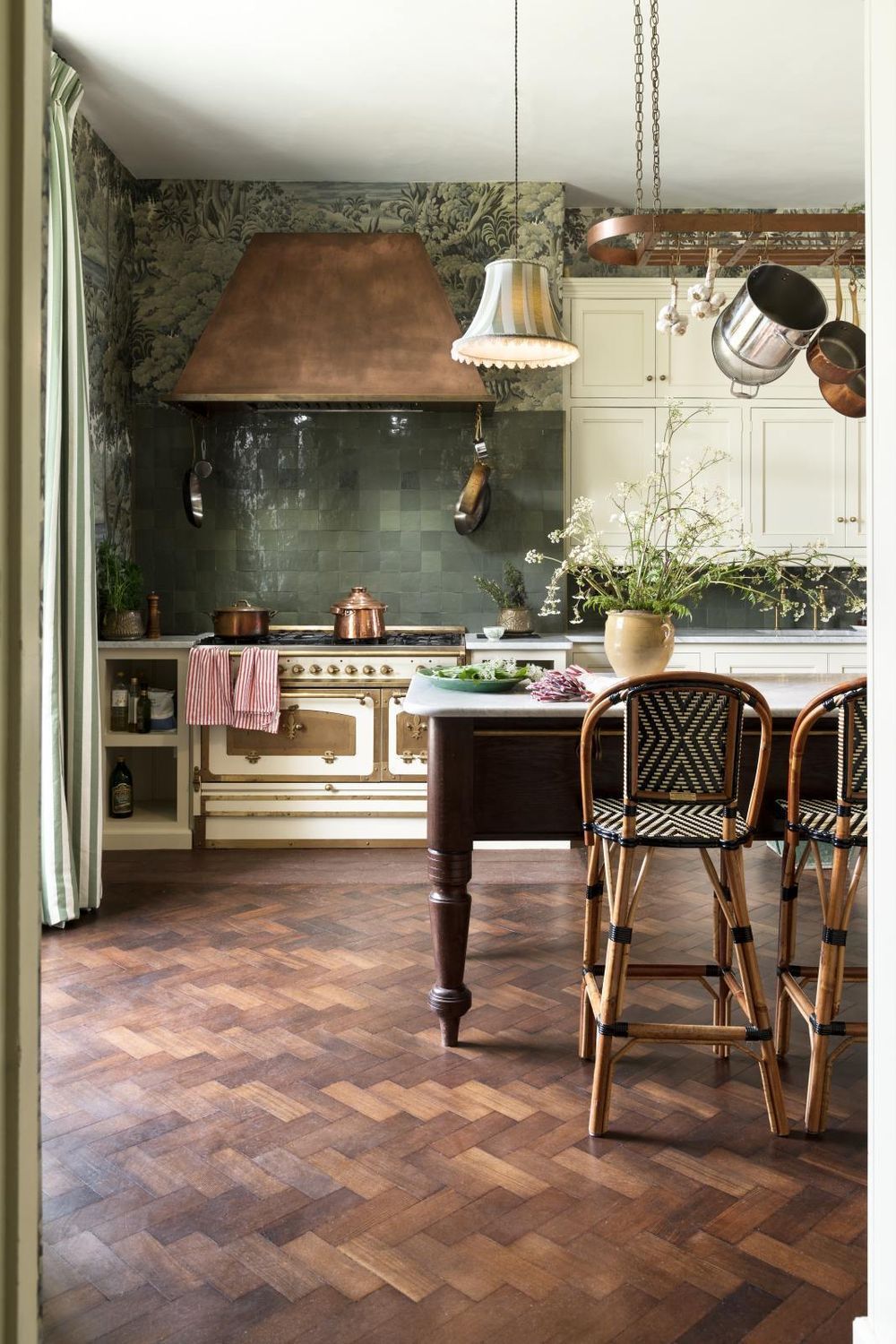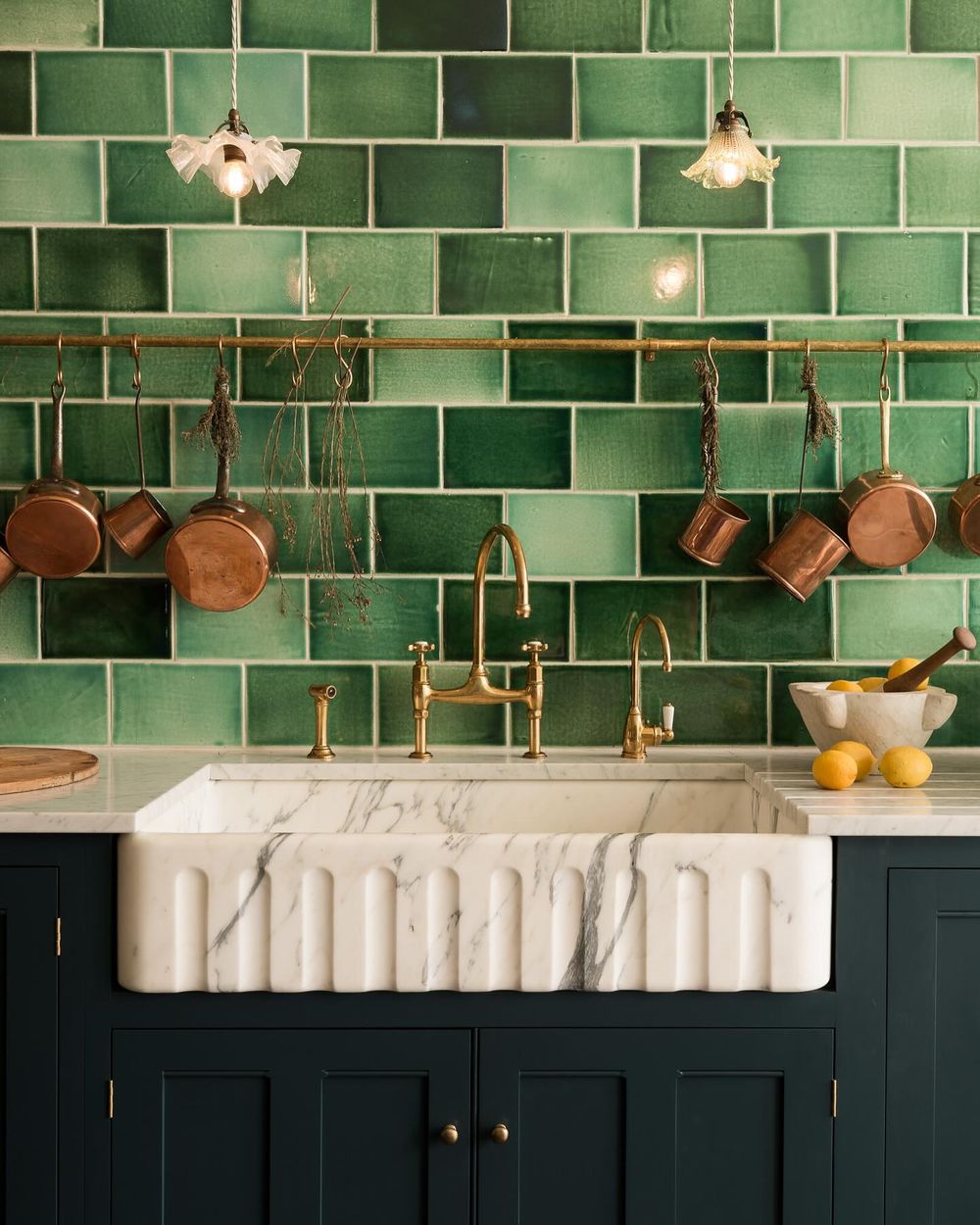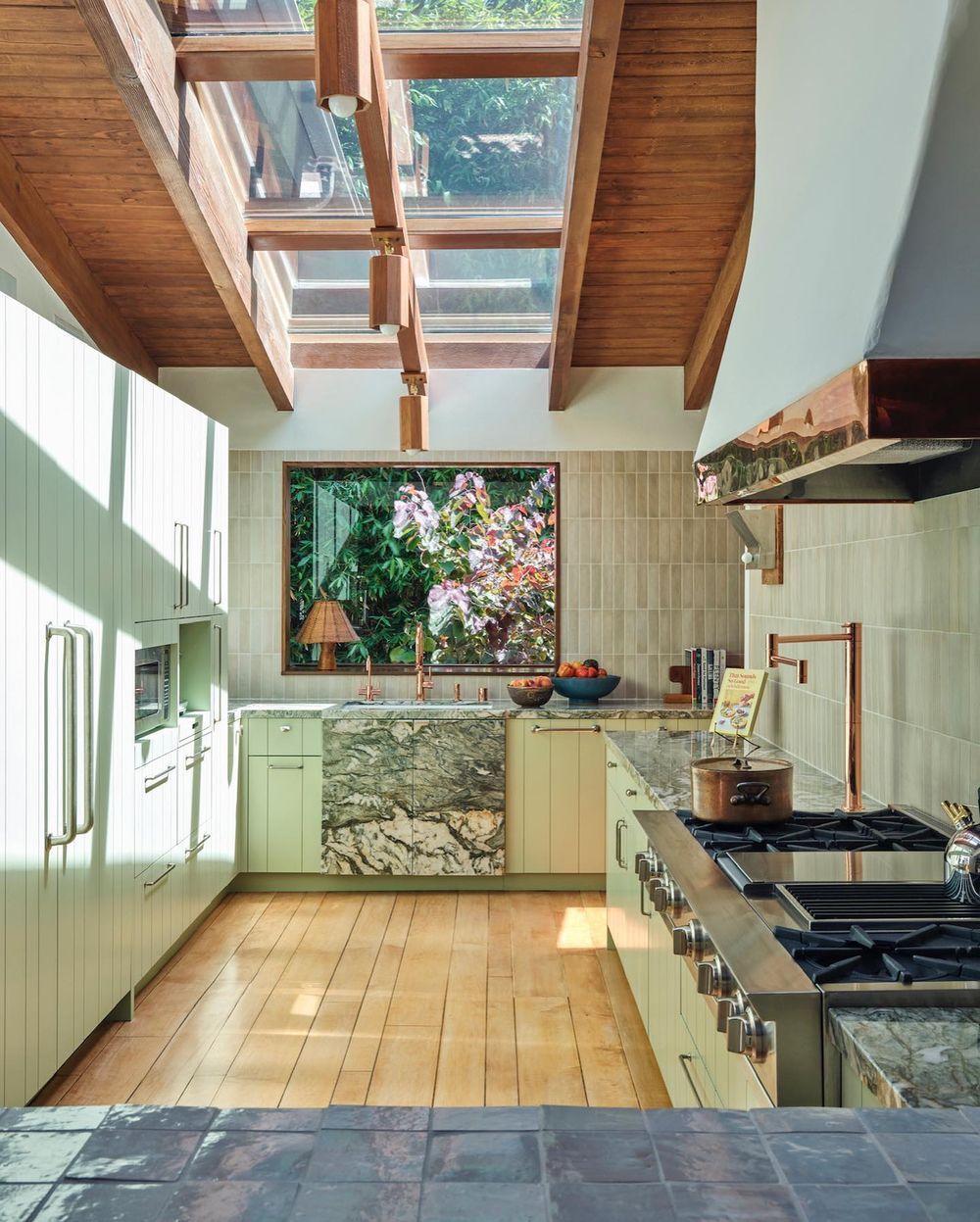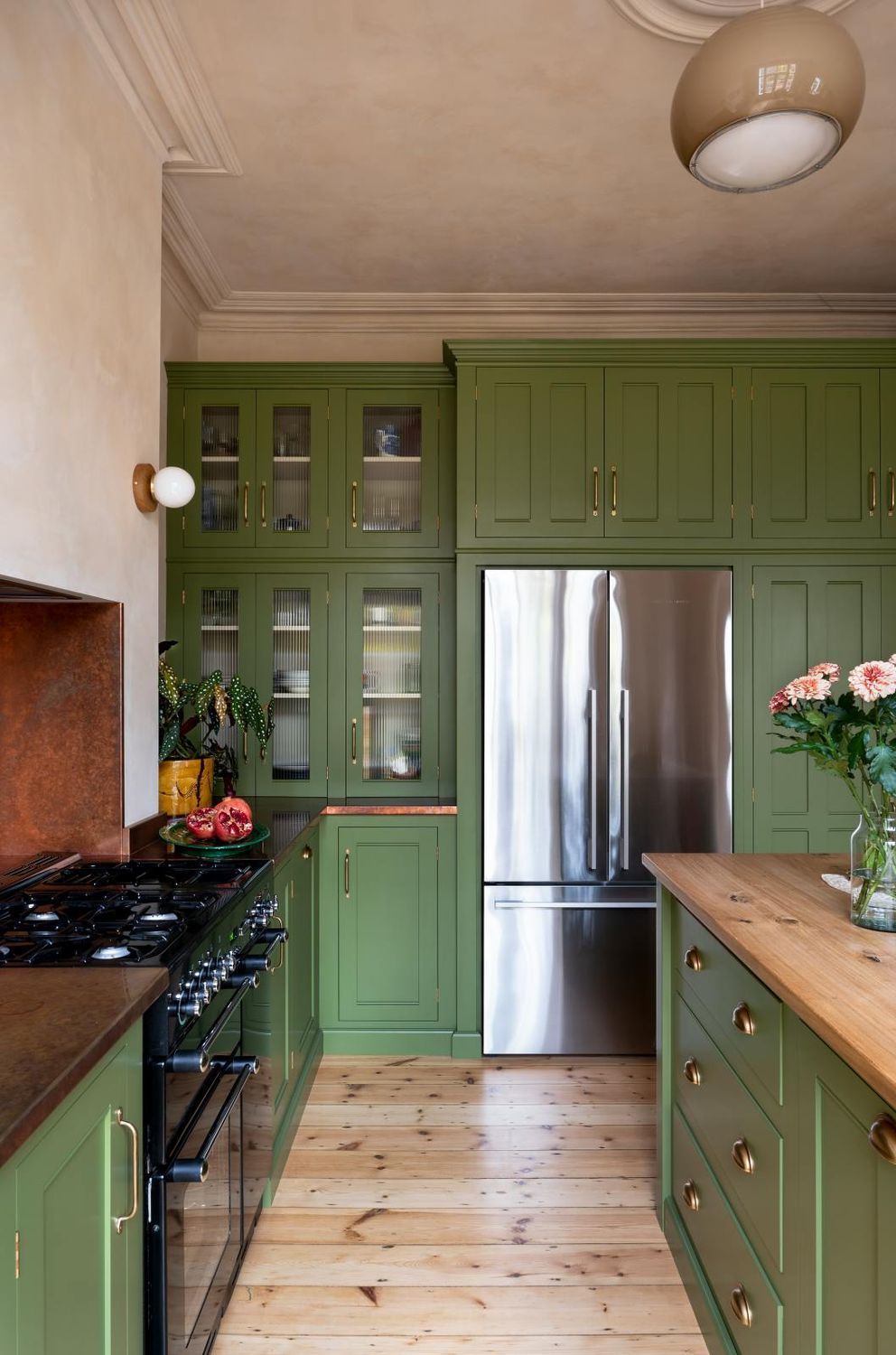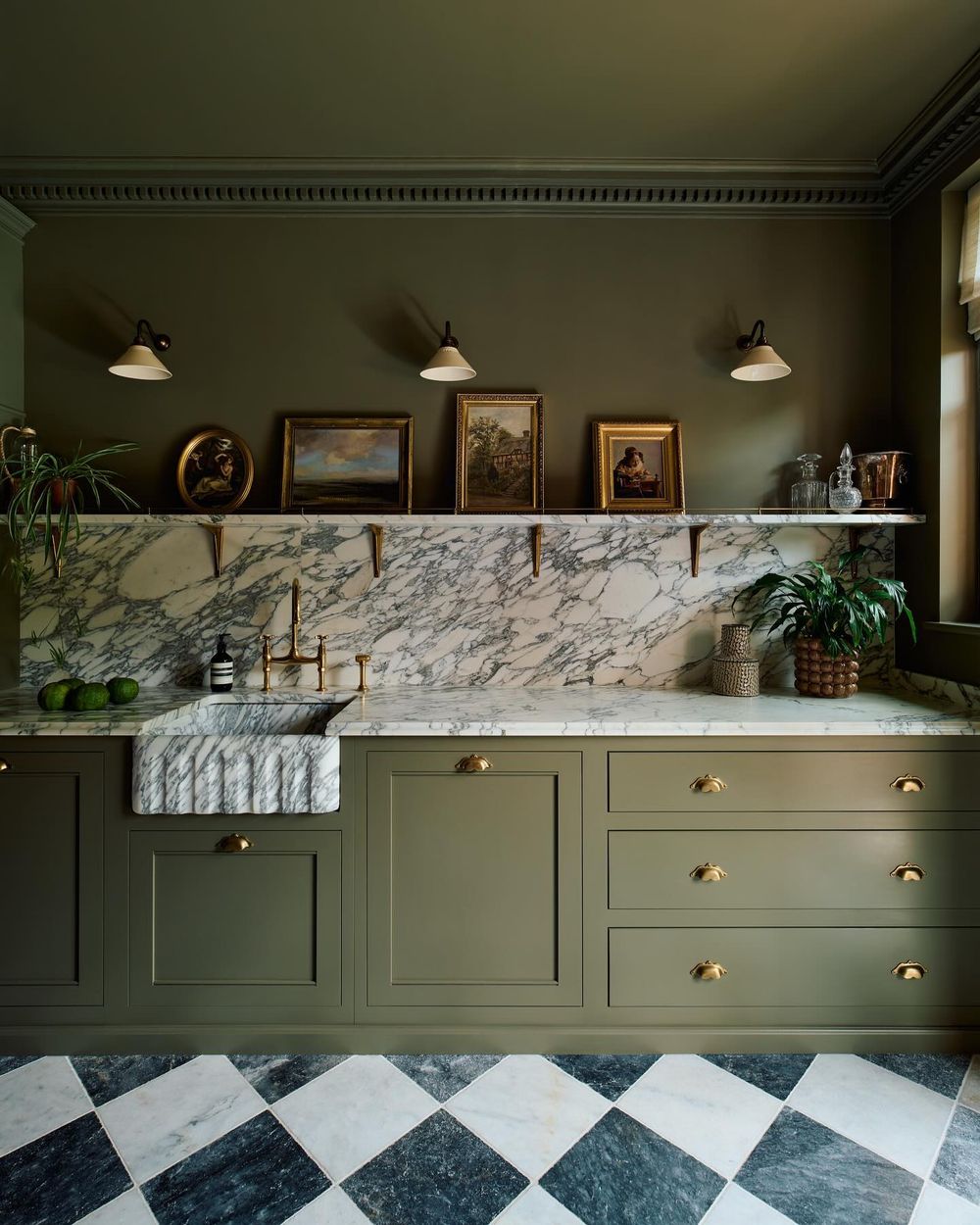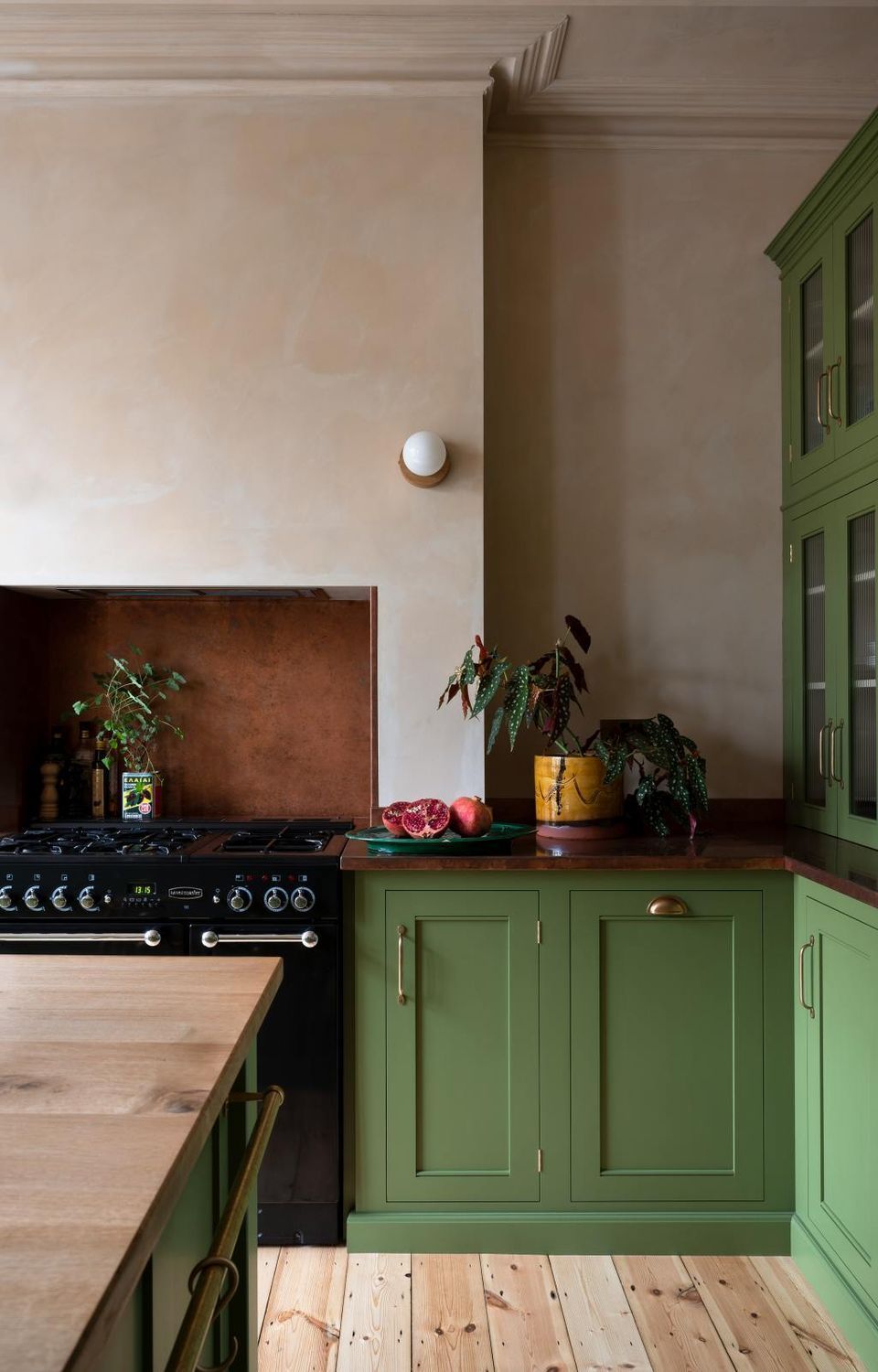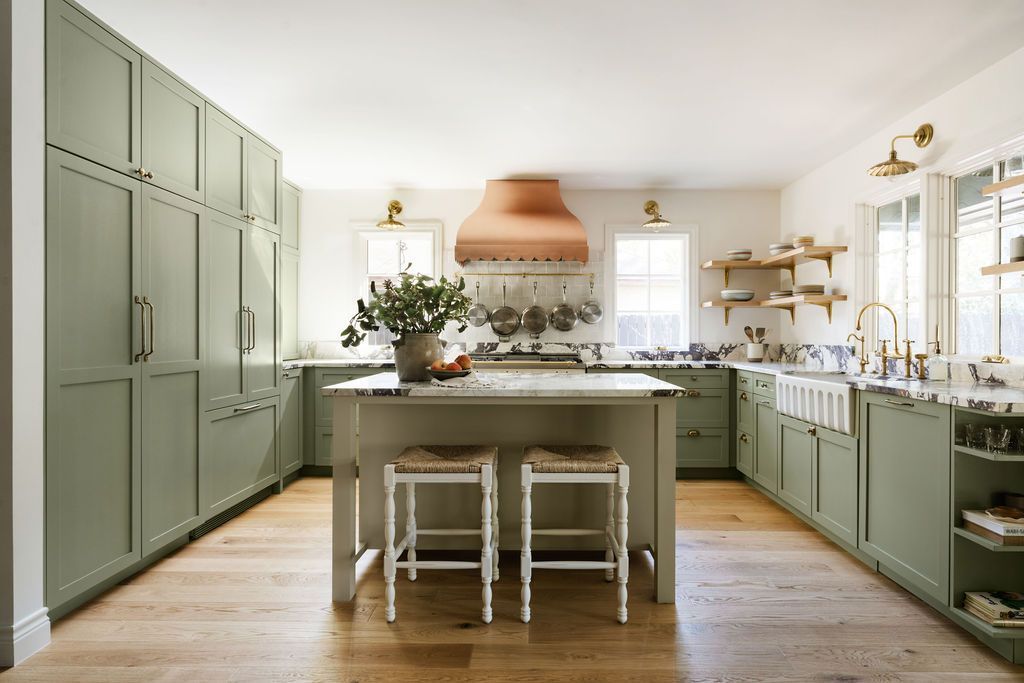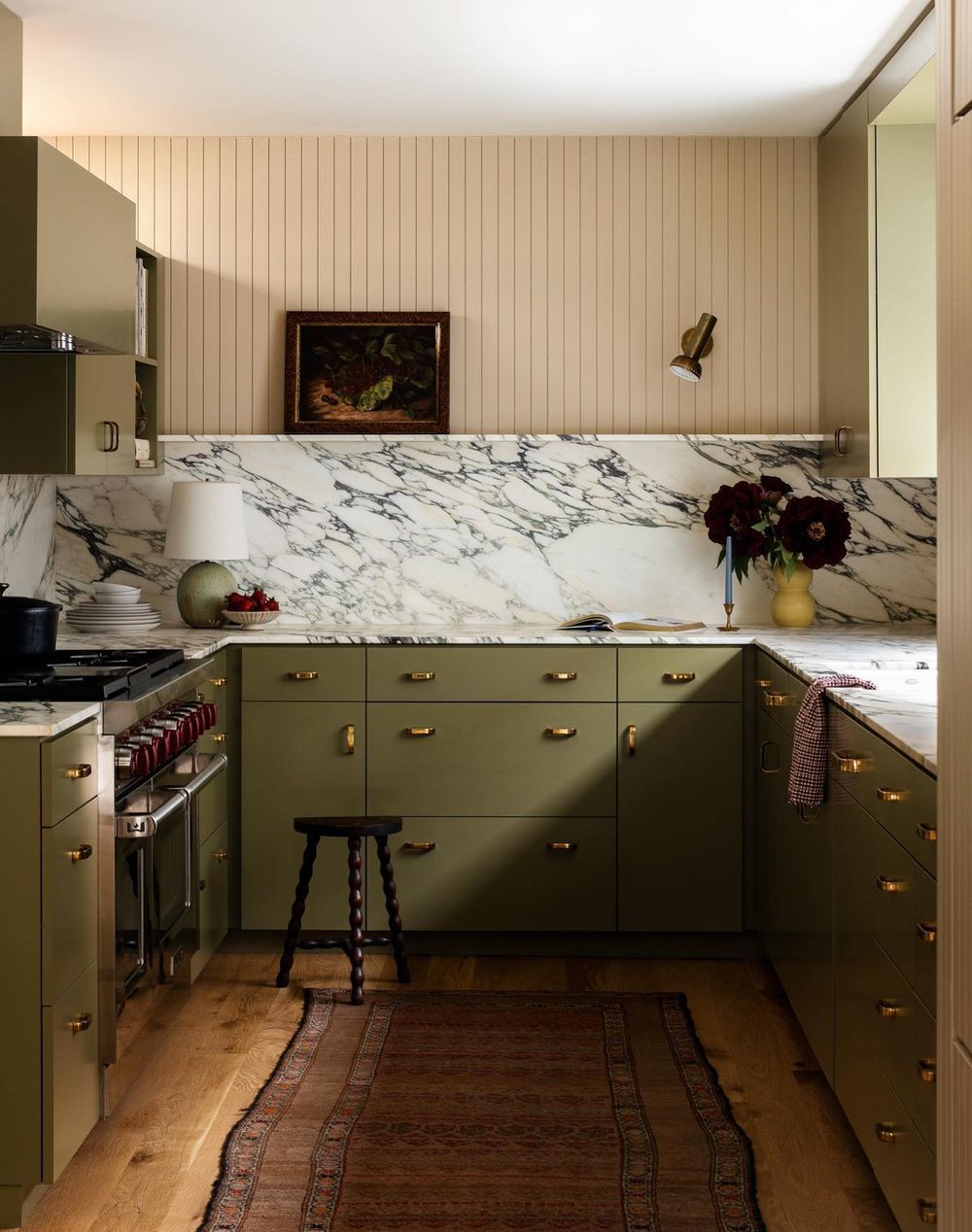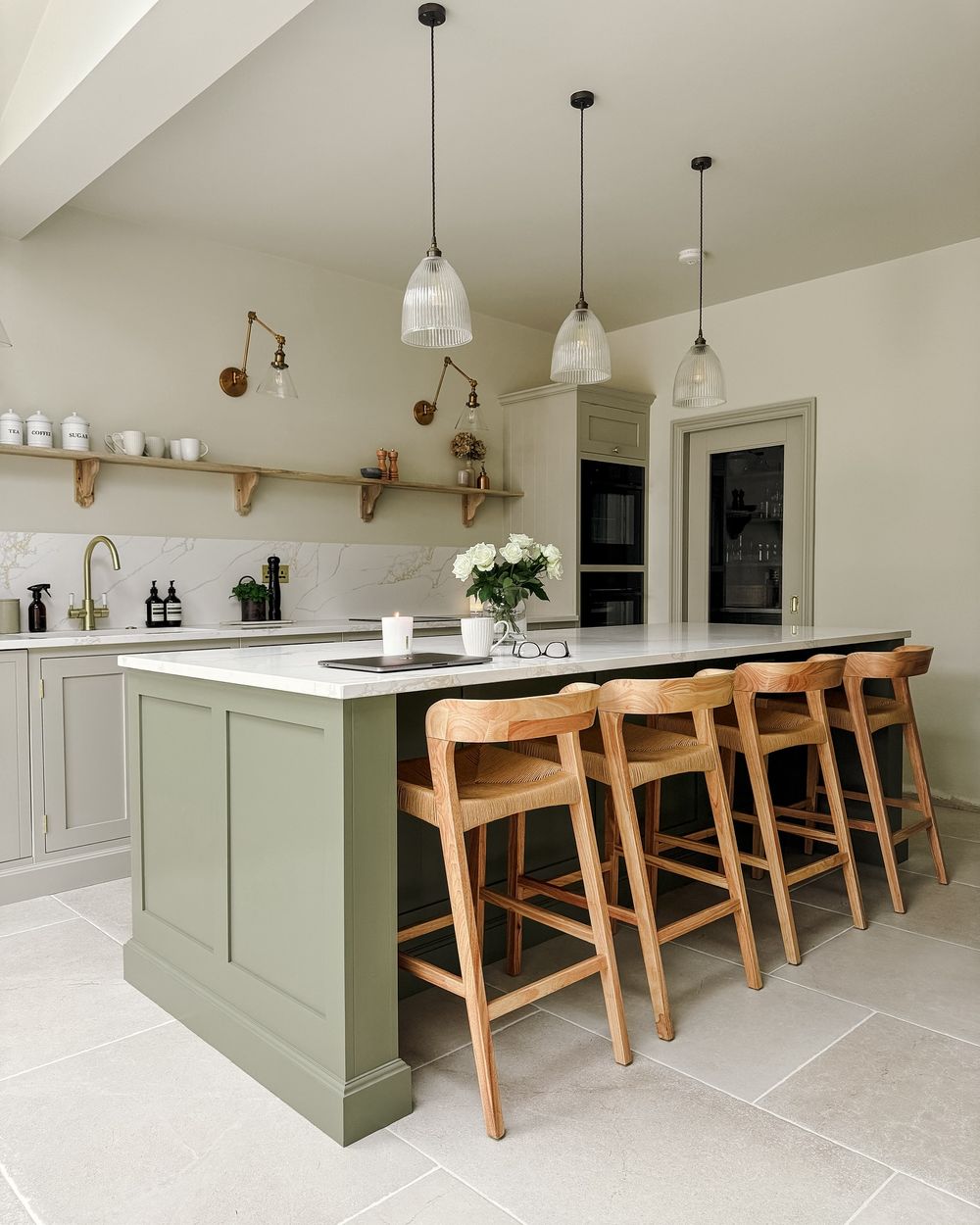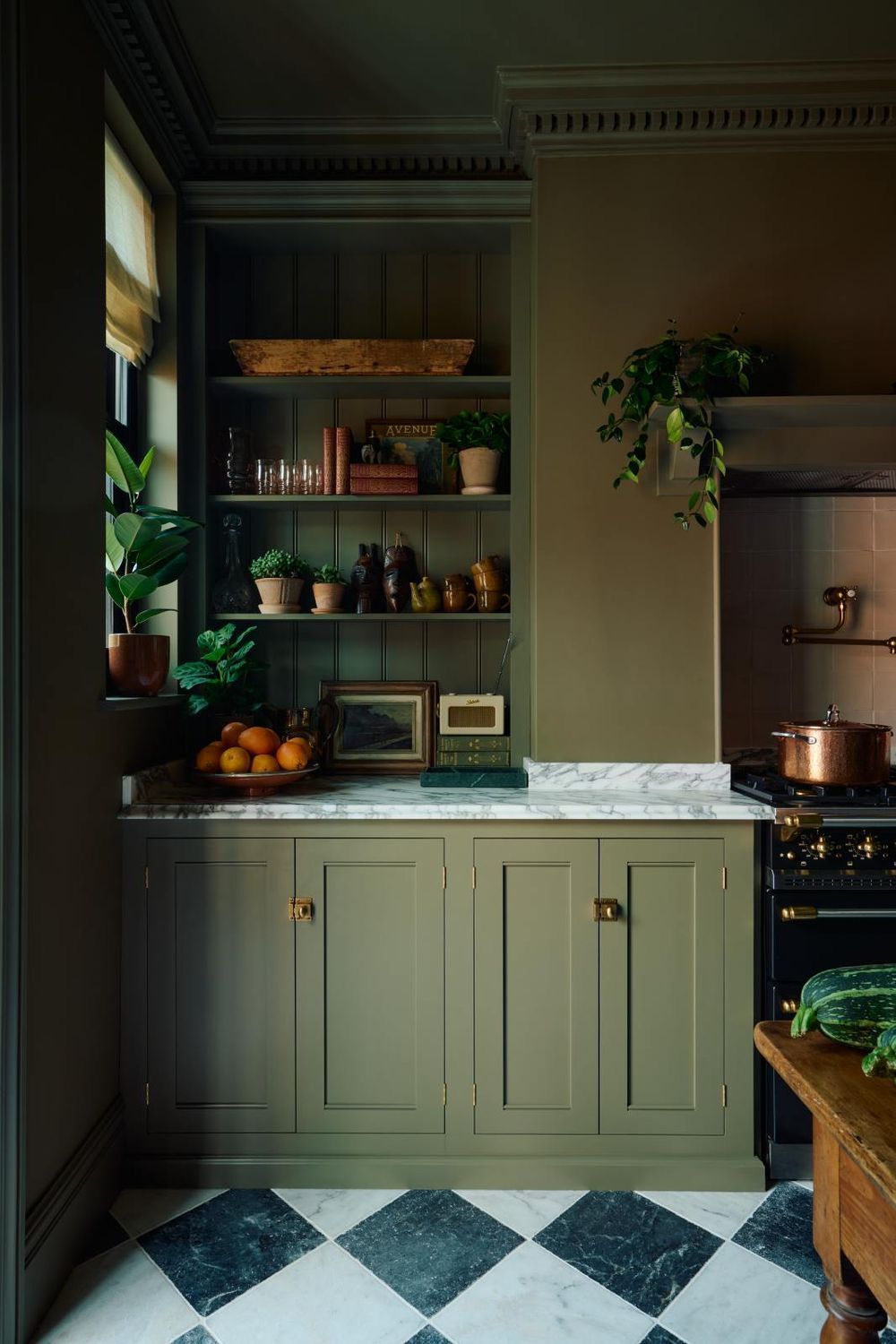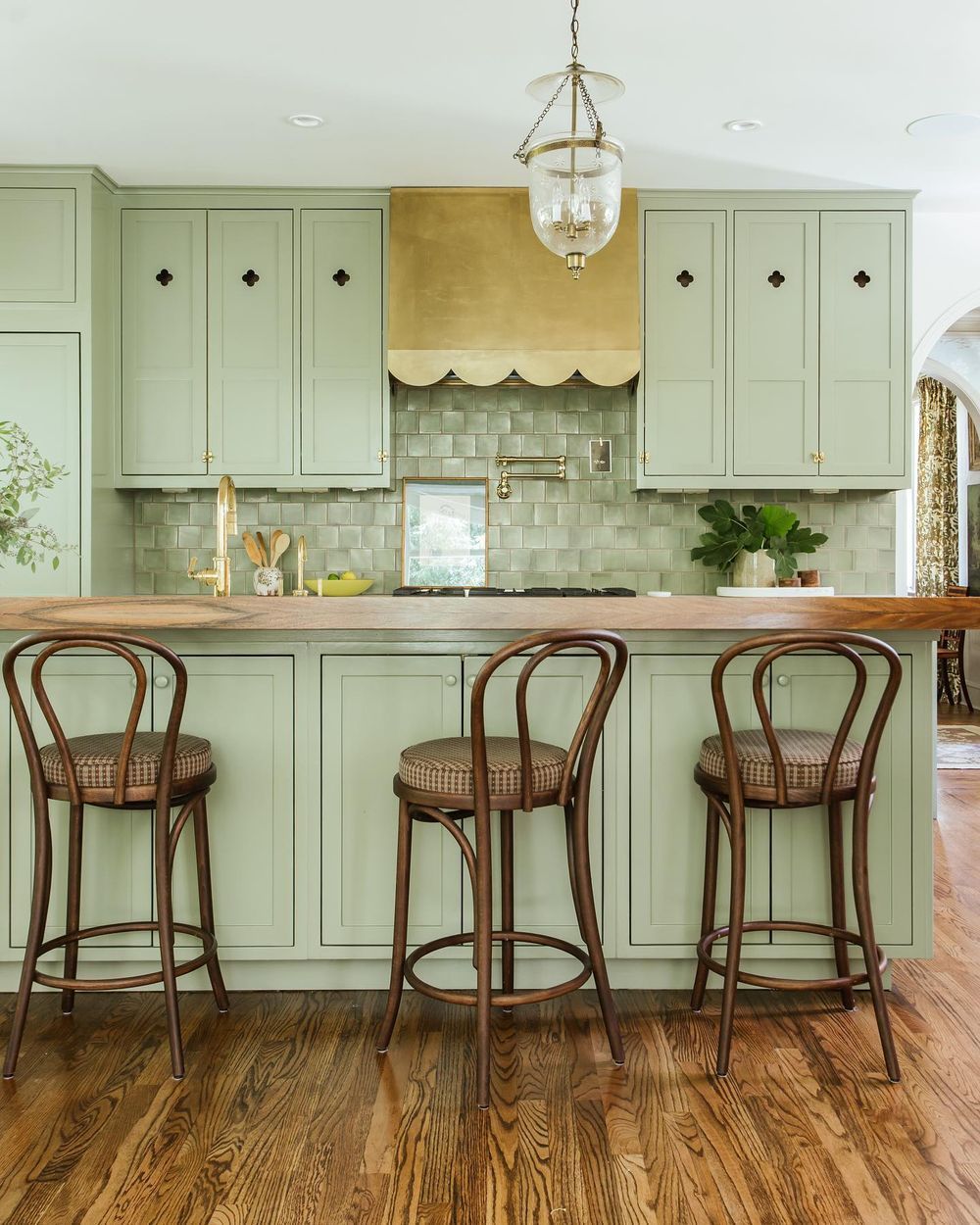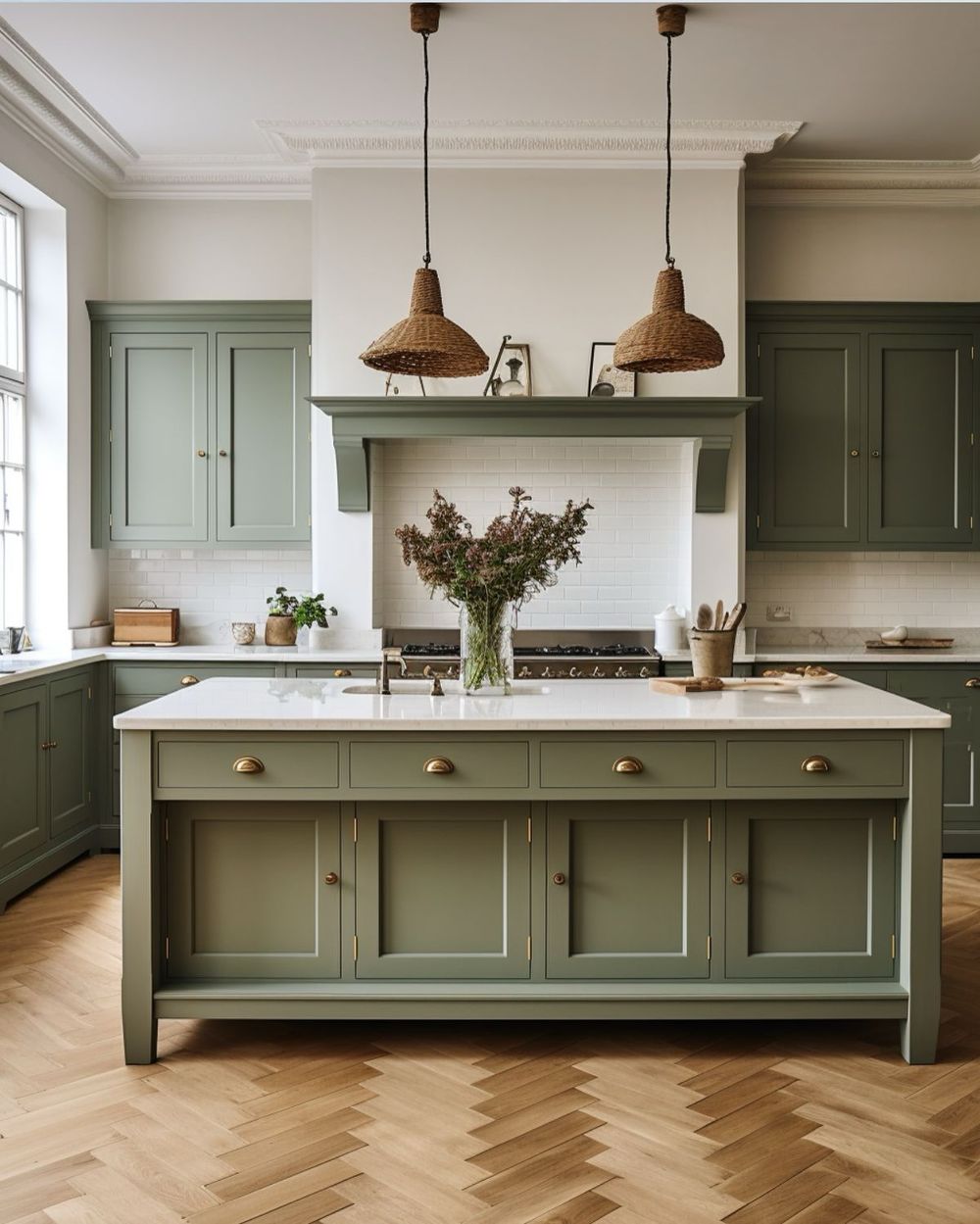In today’s world, where sustainability is more important than ever, green kitchen design is becoming a popular choice for homeowners looking to create a beautiful and environmentally conscious space. This approach not only enhances the aesthetic appeal of your kitchen but also minimizes your ecological footprint by incorporating energy-efficient appliances, sustainable materials, and thoughtful layouts. Join us as we explore innovative ideas and practical tips to help you embrace a greener lifestyle right in the heart of your home.
Understanding Green Kitchen Design Principles
Understanding green kitchen design principles is essential for creating spaces that minimize environmental impact while promoting health and sustainability. By focusing on energy efficiency, water conservation, and the use of eco-friendly materials, homeowners can enjoy a kitchen that not only looks beautiful but also supports a healthier planet. Integrating smart technology can further enhance energy management, reducing utility bills and carbon footprints.
One of the core components of green kitchen design is the selection of sustainable materials. Opting for products made from recycled, reclaimed, or rapidly renewable resources can significantly decrease ecological damage. Additionally, finishes that are low in volatile organic compounds (VOCs) contribute to indoor air quality, making the kitchen a safer place for families to gather.
Energy-efficient appliances are another vital aspect of a green kitchen. Choosing ENERGY STAR-rated models not only helps reduce energy consumption but can also lead to considerable long-term savings. Furthermore, incorporating natural lighting through windows or skylights helps reduce reliance on artificial lighting, creating a brighter space while saving energy.
Water conservation plays a crucial role in sustainable kitchen design as well. Installing low-flow faucets and appliances that consume less water ensures that the kitchen operates efficiently while diminishing waste. Rainwater harvesting systems can also be considered, allowing for collecting and reusing water for various non-potable purposes, further enhancing the kitchen’s sustainability.
Incorporating plants into the kitchen design can provide both aesthetic appeal and functional benefits. Indoor gardens or herb planters can enhance cooking experiences while improving air quality through natural filtration. This connection to nature not only enhances the kitchen environment but also encourages healthier eating habits by making fresh ingredients more accessible.
Lastly, green kitchen design emphasizes the importance of thoughtful layout and organization. Efficient use of space and multifunctional furnishings can reduce the need for additional materials while enhancing usability. By creating a well-organized kitchen that minimizes waste and promotes efficiency, homeowners can truly embody the principles of sustainable living within their culinary spaces.
Selecting Sustainable Materials for Cabinets and Countertops
When selecting sustainable materials for cabinets and countertops in green kitchen design, it is essential to prioritize eco-friendly options that minimize environmental impact. For cabinets, look for woods sourced from sustainably managed forests or those certified by organizations like the Forest Stewardship Council (FSC).
Additionally, consider alternatives such as bamboo or reclaimed wood, which reduce the need for new materials and promote the recycling of existing resources. Countertops also play a significant role in sustainable kitchen design. Materials such as recycled glass, concrete, or quartz made from post-consumer content are excellent choices, providing durability while reducing waste.
Furthermore, natural stones like granite and marble have long lifespans, but it’s crucial to source them responsibly to avoid contributing to unethical mining practices. Another important consideration is the use of low-VOC (volatile organic compounds) finishes and adhesives. These products help maintain indoor air quality by minimizing harmful emissions that can occur from traditional materials.
As you explore various finishes, seek out those that are labeled as non-toxic and contribute to a healthier home environment. Ultimately, the selection process should balance aesthetics, functionality, and sustainability.
Choosing materials that are both visually appealing and environmentally responsible can enhance the kitchen’s charm while supporting a greener lifestyle. By making informed decisions, homeowners can create a beautiful and sustainable kitchen that showcases their commitment to the planet.
Energy-Efficient Appliances and Their Benefits
Energy-efficient appliances are crucial components of a green kitchen design, as they significantly reduce energy consumption while maintaining high performance. These appliances, such as ENERGY STAR-rated refrigerators, dishwashers, and ovens, are engineered to use less energy and water compared to their conventional counterparts.
By integrating these sustainable appliances into a kitchen, homeowners can minimize their environmental impact and subsequently lower utility bills. Incorporating energy-efficient appliances also enhances the overall aesthetic of a kitchen. Many modern models feature sleek designs that align with contemporary interior design trends, allowing them to seamlessly blend into various styles, from minimalist to rustic. This combination of functionality and beauty makes eco-friendly choices an appealing option for those looking to create a stylish yet sustainable space.
Beyond their energy-saving capabilities, these appliances often come with advanced technology that improves usability and performance. Features such as smart sensors, self-cleaning options, and programmable settings make cooking and cleaning more convenient. This not only simplifies daily tasks but also encourages more sustainable habits, such as cooking at optimal times to reduce energy usage.
Finally, investing in energy-efficient appliances can increase the value of a home. As sustainability becomes a higher priority for many buyers, a green kitchen equipped with modern, eco-friendly appliances can be a significant selling point. This commitment to energy efficiency not only benefits homeowners financially but also contributes to a healthier planet for future generations.
Water Conservation Techniques in Kitchen Design
Incorporating water conservation techniques into kitchen design is an essential aspect of creating a sustainable and eco-friendly space. One effective strategy is to install low-flow faucets and aerators, which can significantly reduce water consumption without sacrificing performance. These fixtures help limit the amount of water used for tasks like washing dishes or rinsing produce, promoting mindful usage.
Another key element in water-efficient kitchen design is the integration of energy-efficient appliances, such as dishwashers and refrigerators with high Energy Star ratings. Modern dishwashers are designed to use minimal water, often using less than three gallons per cycle, making them a more sustainable choice compared to hand washing.
Selecting appliances that combine energy efficiency with water conservation can further diminish your kitchen’s environmental footprint. Implementing a greywater recycling system is an innovative way to repurpose water in the kitchen. This system collects water from sinks or dishwashers to be reused for irrigation or other non-potable uses, helping to reduce overall water wastage. Incorporating this feature requires thoughtful plumbing design but can lead to substantial water savings over time.
Lastly, choosing native and drought-resistant plants for indoor herb gardens or windowsill planters can complement a water-conscious kitchen design. These plants require less water and are often more resilient, flourishing with minimal maintenance. By creating a green space in the kitchen that aligns with water conservation goals, you can nurture an environment that is both functional and eco-friendly.
Incorporating Natural Light and Ventilation
Incorporating natural light and ventilation in green kitchen design enhances both aesthetics and sustainability. Large windows, skylights, and glass doors invite abundant sunlight, creating an airy atmosphere while reducing the need for artificial lighting.
This not only lowers energy costs but also improves the overall mood and functionality of the space. Strategically placed operable windows can promote cross-ventilation, ensuring a constant flow of fresh air. This helps to regulate temperature and reduce humidity, contributing to a healthier indoor environment.
Additionally, incorporating elements like ceiling fans can further assist in circulating air, making the kitchen comfortable year-round. Using light-colored materials and reflective surfaces can amplify the effects of natural light, making the space feel larger and more inviting.
Sustainable strategies like incorporating plant life can also improve air quality and enhance the natural feel of the kitchen. Overall, the thoughtful integration of light and ventilation is key to creating an eco-friendly kitchen that is both beautiful and functional.
Eco-Friendly Flooring Options
Choosing eco-friendly flooring is a vital aspect of creating a sustainable kitchen design. Options like bamboo and cork are rapidly gaining popularity due to their renewable nature; bamboo grows quickly and can be harvested without harming the environment, while cork is harvested from the bark of cork oak trees without cutting them down, allowing them to regenerate.
Reclaimed hardwood is another excellent choice, as it repurposes old wood from buildings and furniture, reducing waste and conserving natural resources. This option not only adds character and history to the space but also lessens the demand for new timber, thus protecting forests.
For unique alternatives, recycled tile made from glass or other materials provides a stylish yet sustainable flooring option. These tiles can come in various colors and shapes, allowing for creative designs while reducing landfill waste.
Linoleum, made from natural ingredients like linseed oil and cork dust, is a biodegradable flooring option that is both durable and low in volatile organic compounds (VOCs). Available in many colors and patterns, it combines eco-friendliness with aesthetics, making it suitable for a modern kitchen setting.
Lastly, rubber flooring is an increasingly popular choice for its resilience and comfort underfoot. Often derived from recycled tires, this flooring option is not only sustainable but also provides excellent cushioning and sound absorption, making it ideal for busy kitchen environments.
Designing for Waste Reduction and Recycling
Designing for waste reduction and recycling is a crucial aspect of creating a green kitchen. Sustainable kitchen design starts with materials; selecting cabinetry, countertops, and fixtures made from recycled or rapidly renewable resources can significantly minimize environmental impact.
Opting for durable products ensures longevity, reducing the need for replacements and the subsequent waste generated. Incorporating recycling systems into kitchen designs can enhance everyday functionality. Providing convenient and clearly labeled bins for compost, recycling, and trash encourages family members to sort their waste effectively.
Custom cabinetry can integrate these bins seamlessly into the kitchen’s aesthetic, promoting organization while highlighting a commitment to sustainability.
An efficient kitchen layout can also aid in reducing food waste. Designing with meal prep in mind, including ample storage solutions for fresh produce and leftovers, helps prevent spoilage. Furthermore, appliances that feature smart technology can assist in monitoring food inventory and expiration dates, fostering mindful consumption.
Finally, utilizing energy-efficient appliances and fixtures contributes to a sustainable kitchen. These designs not only reduce energy waste but can also save homeowners on utility bills over time. By prioritizing energy efficiency, designers can significantly diminish the kitchen’s overall environmental footprint while promoting healthier lifestyles.

